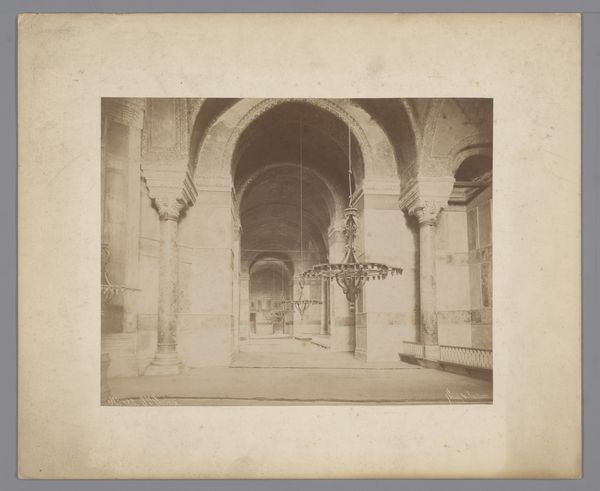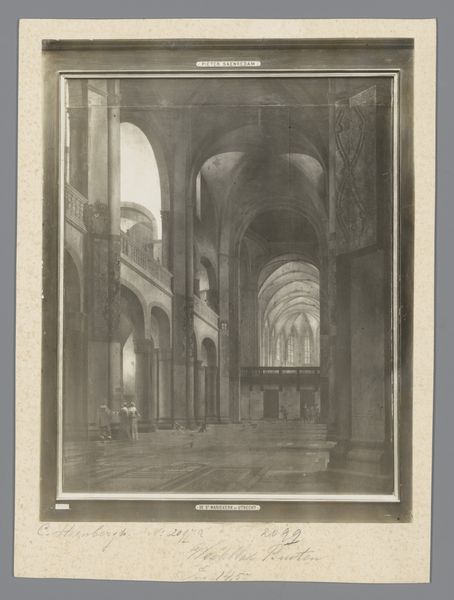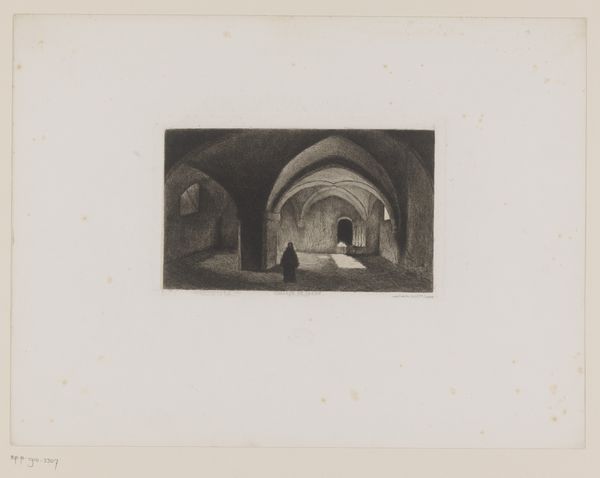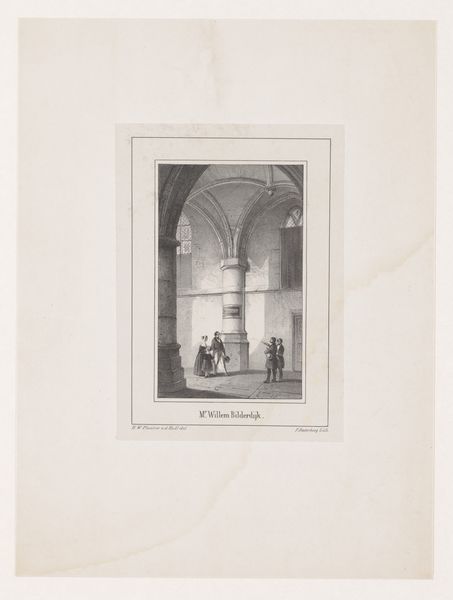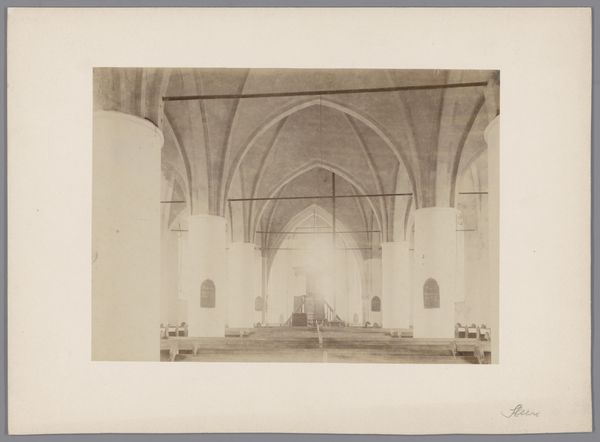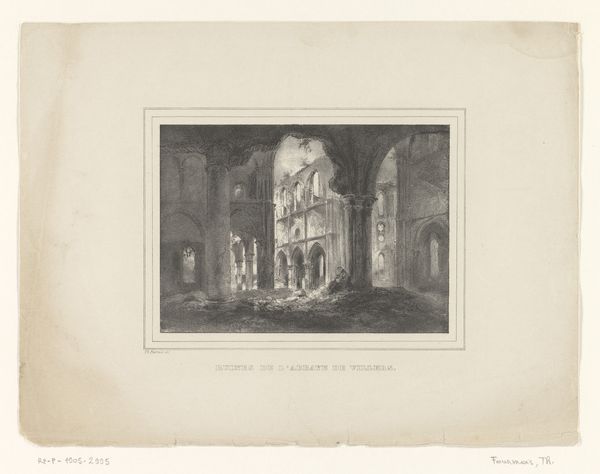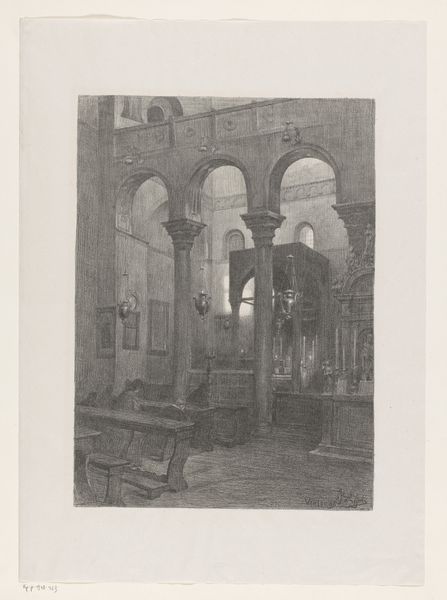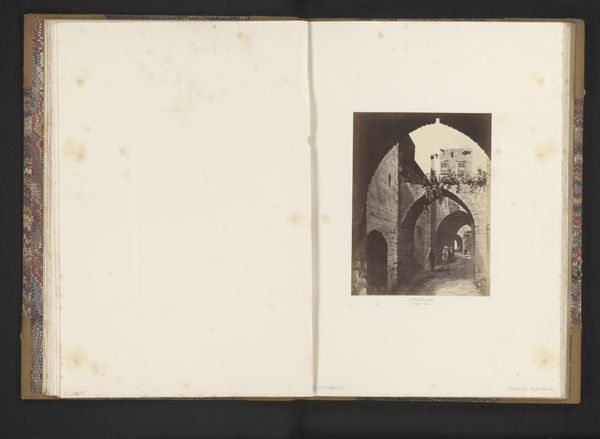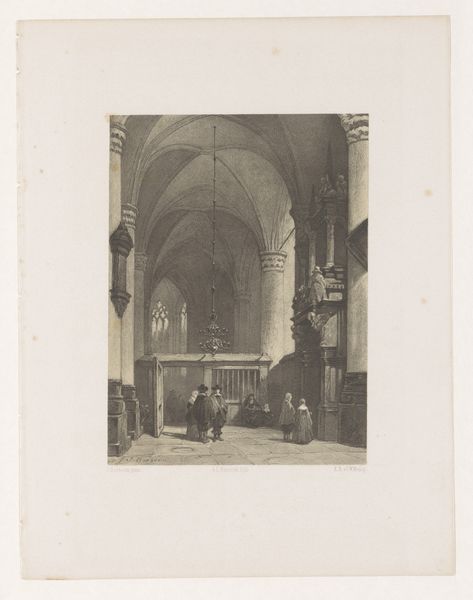
print, engraving, architecture
# print
#
line
#
cityscape
#
engraving
#
architecture
#
realism
Dimensions: height 315 mm, width 486 mm
Copyright: Rijks Museum: Open Domain
Louis Jules Frederic Villeneuve captured this view of the Palazzo Scaglia di Verrua courtyard, using lithography. This printing technique involves drawing with a greasy crayon onto a stone or metal plate, then using oil-based ink to transfer the image to paper. Lithography, invented in the late 18th century, democratized image-making by enabling the relatively easy reproduction of drawings and paintings. Villeneuve uses it here to create an image of Italian Renaissance stonework, contrasting the smoothness of the paper with the rough texture of the stone. Notice how the artist has used the lithographic process to suggest light and shadow, giving a sense of depth and volume to the architecture. The print captures a moment in time, the solitary figure adding a human element to the grand space. By focusing on the medium and process, we can appreciate how Villeneuve not only depicted the Palazzo but also engaged with the wider social context of artistic production in his time, highlighting the relationship between craft, technology, and the democratization of art.
Comments
No comments
Be the first to comment and join the conversation on the ultimate creative platform.

